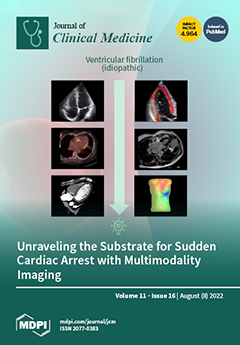Background: A pace and ablate strategy may be performed in refractory atrial fibrillation with rapid ventricular response.
Objective: We aimed to assess sex-related differences in patient selection and clinical outcomes after pace and ablate.
Methods: In a retrospective multicentre study, patients undergoing AV junction ablation were studied. Sex-related differences in baseline characteristics, all-cause mortality, heart failure (HF) hospitalizations, and device-related complications were assessed.
Results: Overall, 513 patients underwent AV junction ablation (median age 75 years, 50% men). At baseline, men were younger (72 vs. 78 years,
p < 0.001), more frequently had non-paroxysmal AF (82% vs. 72%,
p = 0.006), had a lower LVEF (35% vs. 55%,
p < 0.001) and more frequently had cardiac resynchronization therapy (75% vs. 25%,
p < 0.001). Interventional complications were rare in both groups (1.2% vs. 1.6%,
p = 0.72). Patients were followed for a median of 42 months in survivors (IQR 22–62). After 4 years of follow-up, the combined endpoint of all-cause death or HF hospitalization occurred more often in men (38% vs. 27%,
p = 0.008). The same was observed for HF hospitalizations (22% vs. 11%,
p = 0.021) and all-cause death (28% vs. 21%,
p = 0.017). Sex category remained an independent predictor of death or HF hospitalization after adjustment for age, LVEF and type of stimulation. Lead-related complications, infections, and upgrade to ICD or CRT occurred in 2.1%, 0.2% and 3.5% of patients, respectively.
Conclusions: Pace and ablate is safe with a need for subsequent device-related re-interventions in 5.8% over 4 years. We found significant sex-related differences in patient selection, and women had a more favourable clinical course after AV junction ablation.
Full article






